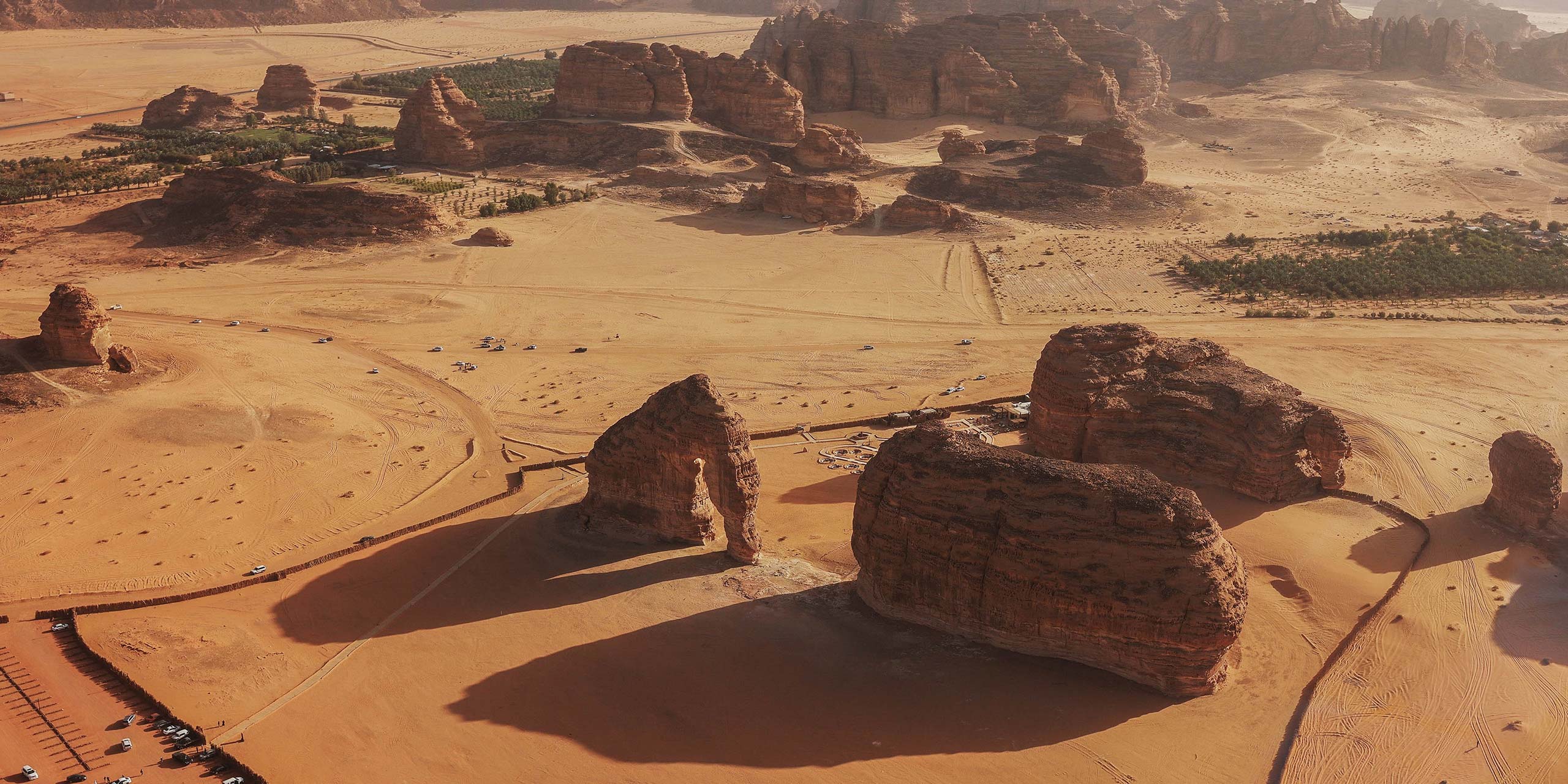
Al Ula is home to Saudi Arabia’s first UNESCO World Heritage Site. It is an area rich in historical and geographical significance, an ancient city that once sat at the crossroads of the Silk Road and the Incense Route. The draw to this remote destination is its remarkable natural rock formations and canyons, extensive and varied pre-Arabic rock art, and immaculately preserved tombs built more than 2,000 years ago by the Nabataeans. In 2019, Saudi Arabia launched the Al Ula vision, which features a nature reserve called Sharaan, as well as the establishment of the Global Fund for the protection and revitalization of the Arabian Leopard. Here’s how to get the most out of 48 hours at the destination.
DAY 1:
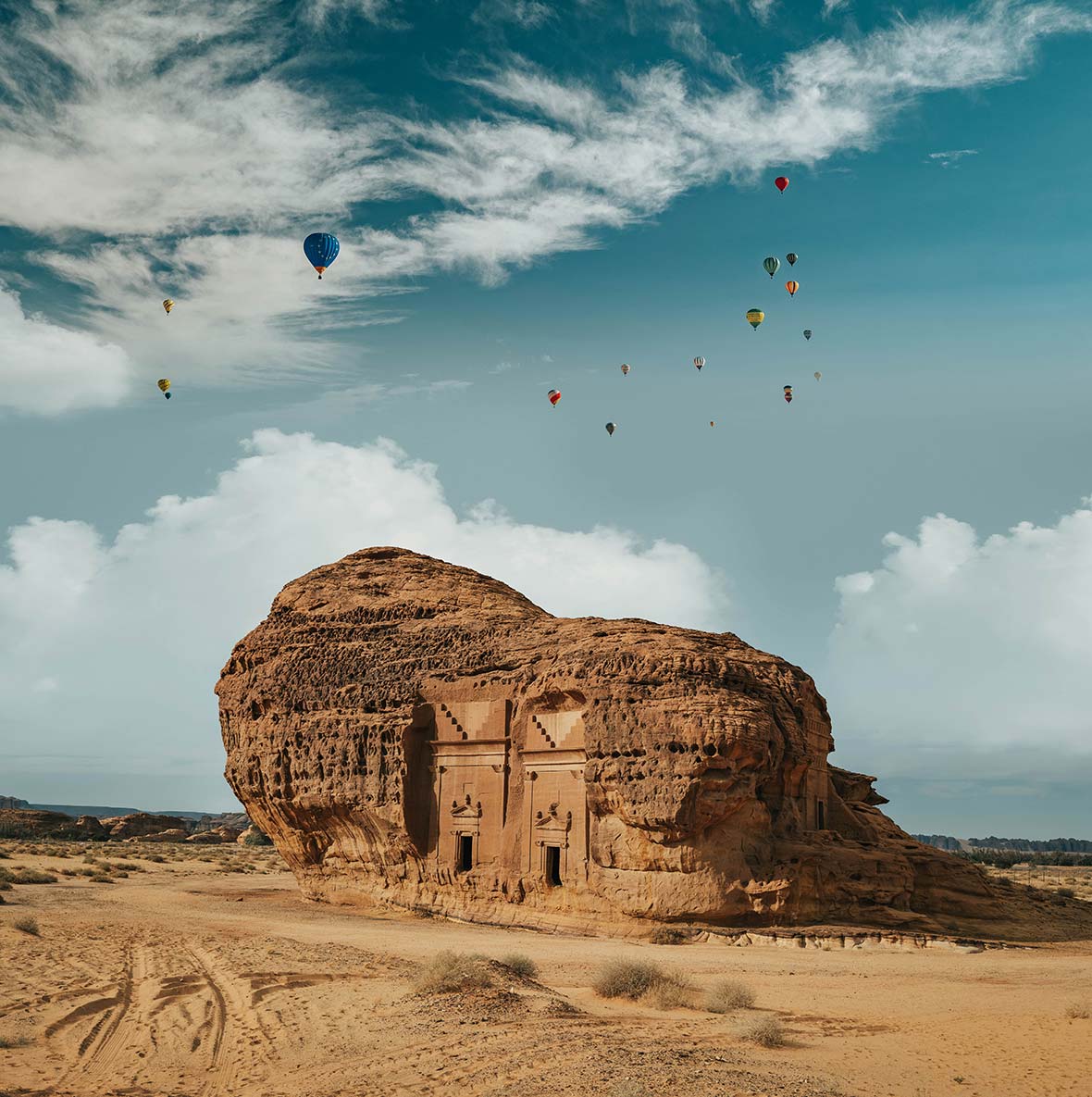
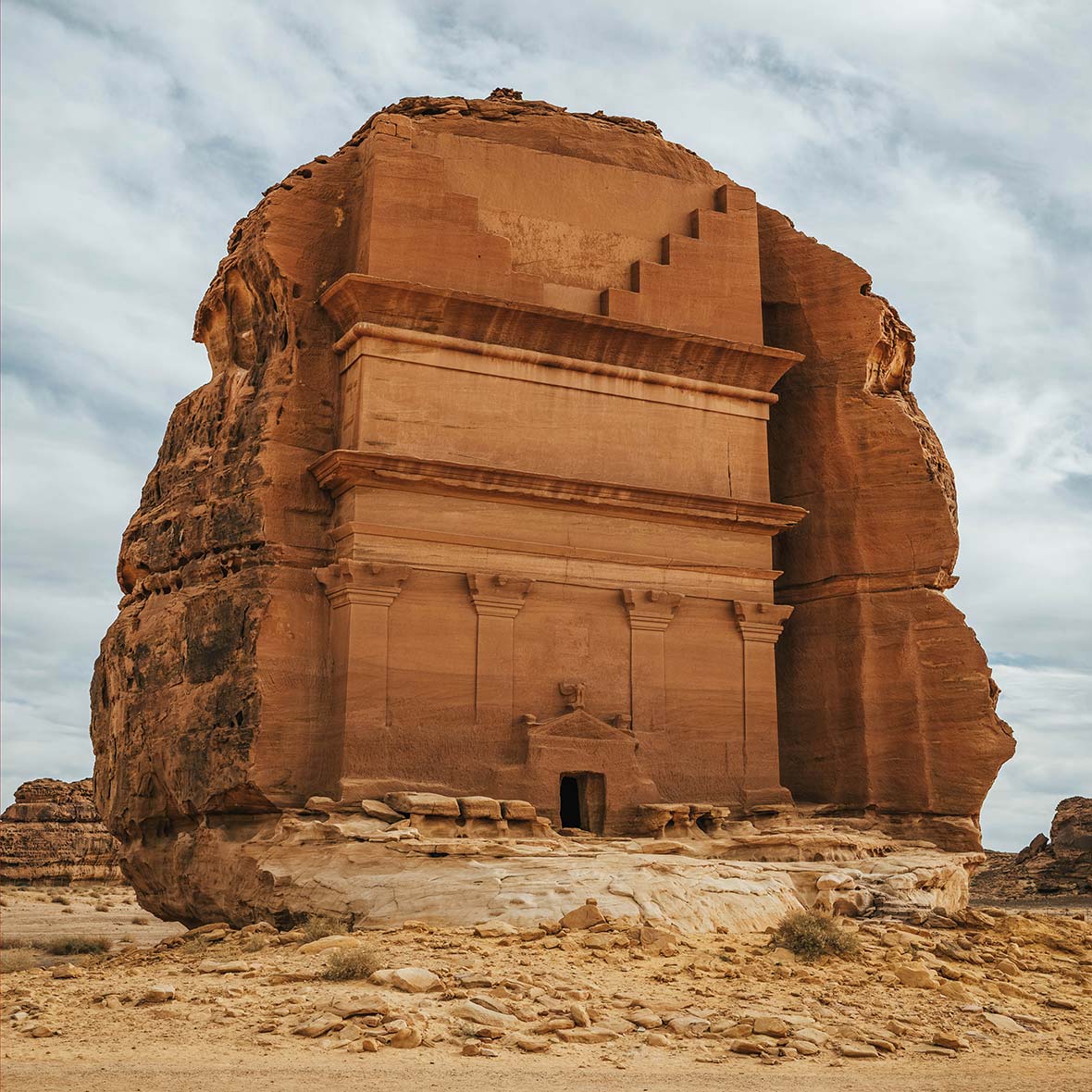
The draw to Al Ula is its remarkable natural rock formations and canyons, extensive and varied pre-Arabic rock art, and immaculately preserved tombs built more than 2,000 years ago by the Nabataeans. You’ll start your Al Ula itinerary with a visit to the Nabataean site of Hegra, which was the southern capital of the Nabataean kingdom, dating back to the first century BCE. Today, visitors can explore more than 100 well-preserved monumental tombs, most with elaborate facades carved from rock formations scattered around the desert.
Before the Nabataeans, Al Ula was the capital of the ancient kingdom of Dadan. You’ll take a journey even further back in time by observing the remarkably well-preserved cliffside tombs dating from this period carved from a red-rock mountain face. Afterwards, end the day with an exploration of Al Ula old city. Once a bustling oasis town with nearly 900 homes and five town squares made up of mostly mudbrick and stone, much of the abandoned ancient Deira’s structures still stands and is now an archaeological site. Visitors can tour the maze-like town and enjoy views of Al Ula Castle.
Day 2:
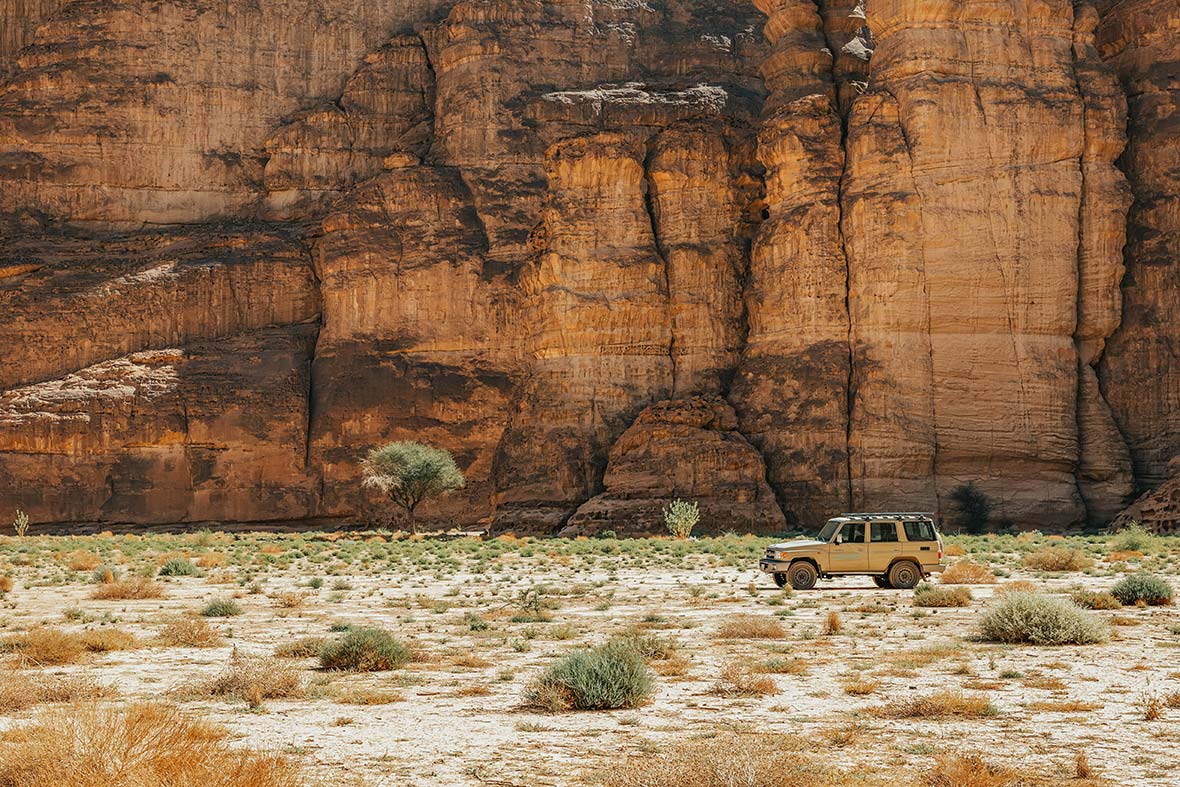
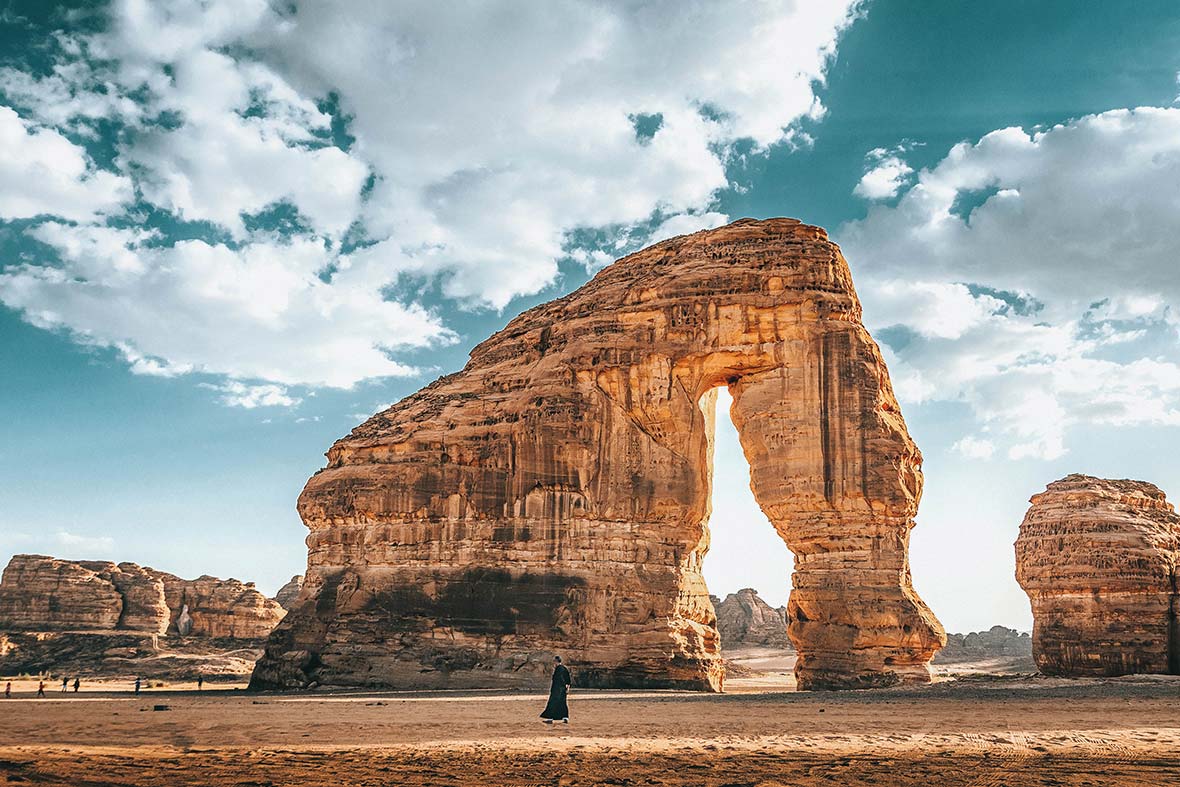
No trip to Saudi Arabia is complete without a 4×4 excursion into the desert. And you can start your second day with an unforgettable sortie around the towering dunes that surround Al Ula. Following the ups and downs of the morning four-wheel safari, guests can settle down for a delicious Bedouin-style picnic lunch encompassing a wide range of Saudi and other Middle Eastern delicacies.
Elephant Rock is a key site in an area rich in historical and geographical significance. Set in golden desert sands and climbing into the blue Arabian skies, the rock (also known as Jabal Alfil) is one of Al Ula’s most impressive geological marvels. Unlike the ornate, hand-carved facades of nearby Hegra’s Nabataean tombs, the “trunk” and “body” of this monolithic red sandstone beast were shaped by natural forces — millions of years of wind and water erosion.
The beauty of the unrefined structure is enhanced by a landscape of golden sands, studded with rocky outcrops, many of which are equally impressive in size and have interesting shapes and figures.
Where to Stay: Habitas Al Ula
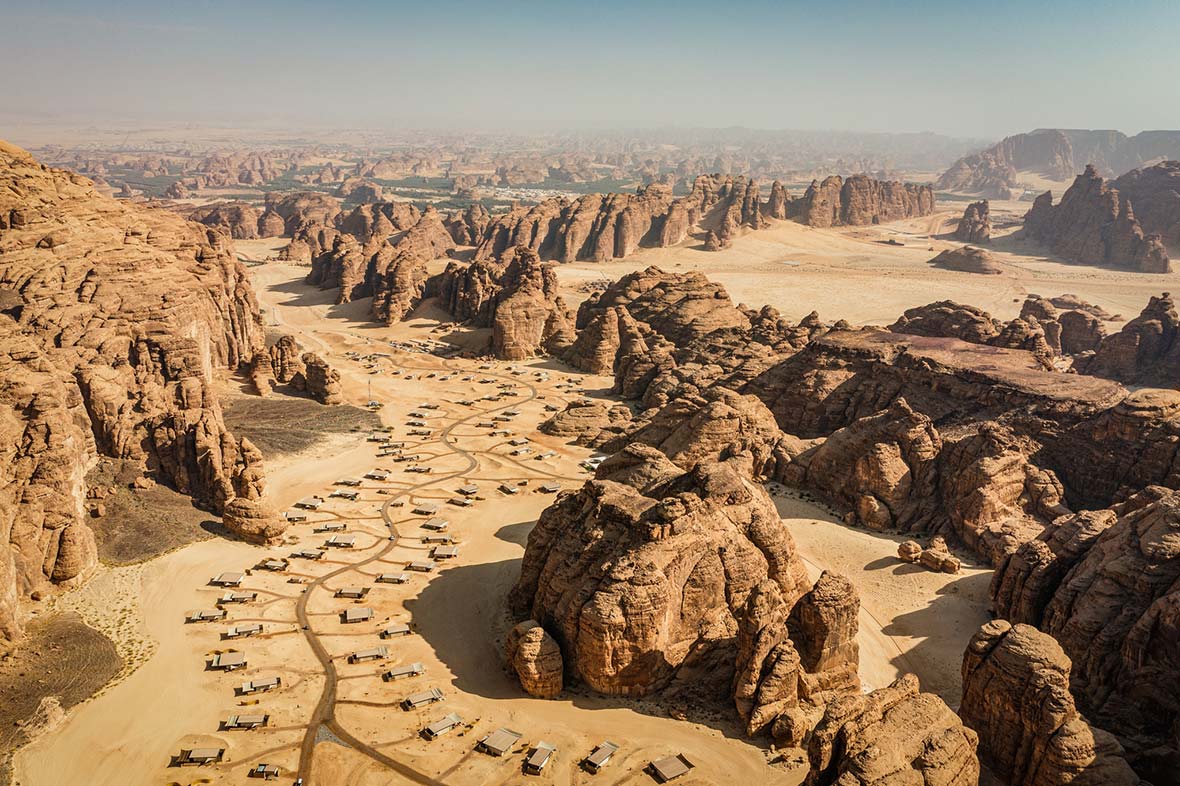
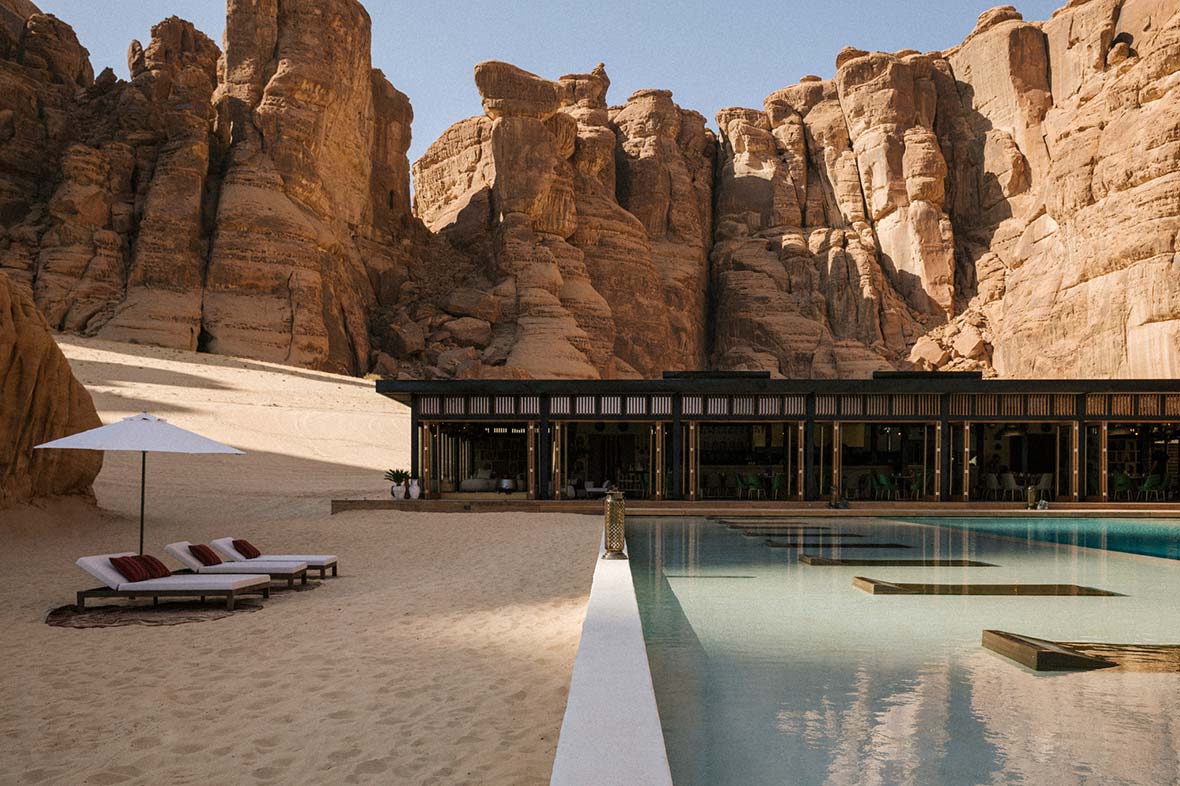
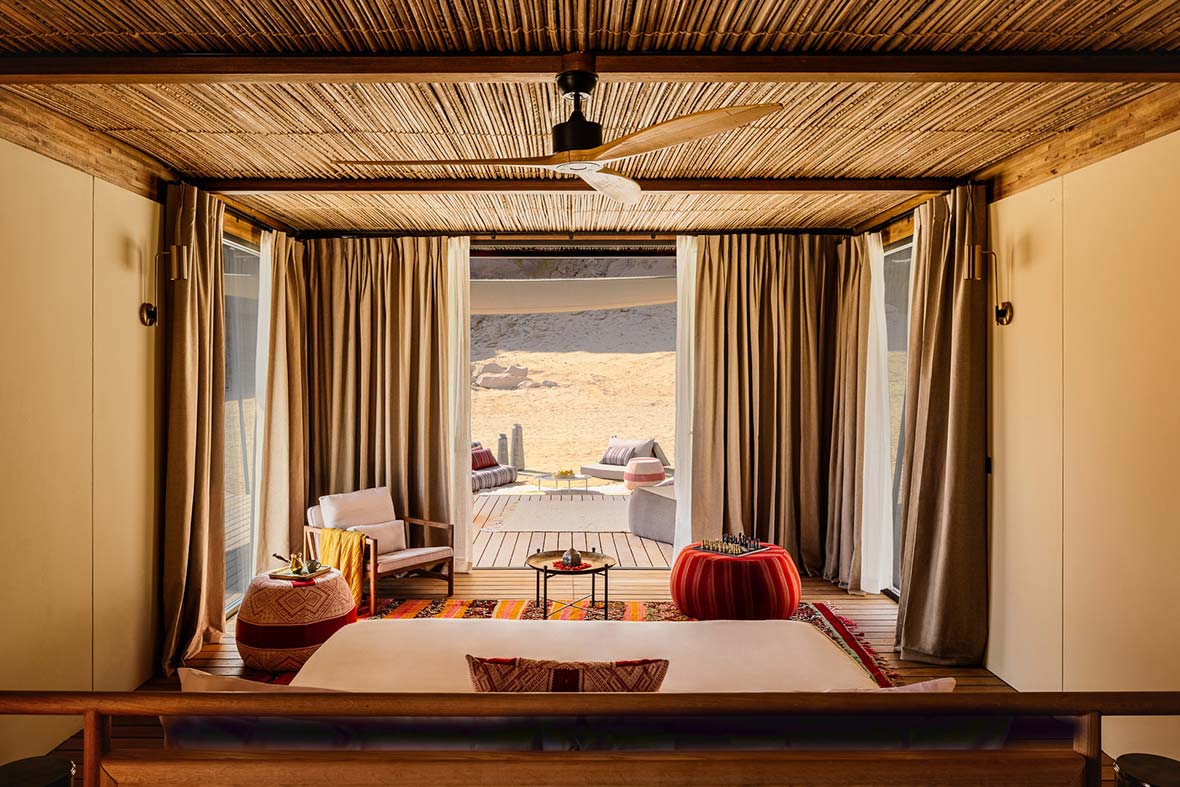
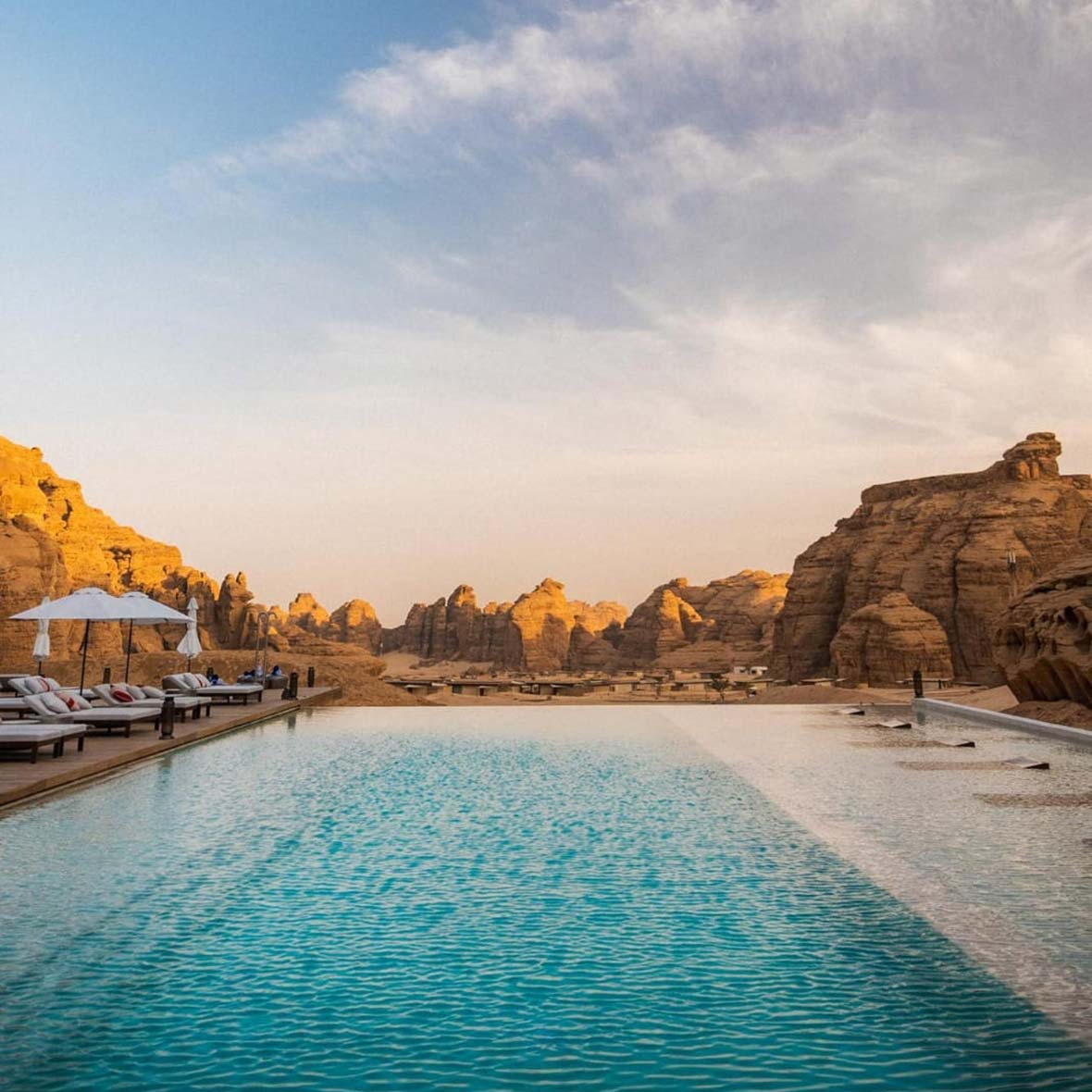
The Habitas Al Ula is an upscale adults-only hotel that brings luxury living to Al Ula in an eco-friendly manner. The property sits within the desert canyons of the Ashar Valley, surrounded by sandstone cliffs and palm groves. Scattered across a vast swath of sand are 96 villas, each with well-appointed terraces, across three tiers: premium Celestial villas, Alcove villas, and Canyon villas. Each villa is sustainably-designed to embrace the natural surroundings and take advantage of the scenic canyon views. Complimentary e-bikes are parked by each suite, inviting guests to explore the property and beyond. The restaurant, Tama, practices sustainable agricultural methods and brings eco-consciousness into its local dishes. Other facilities include a yoga deck, wellness and fitness centers, and a swimming pool. In addition, the hotel facilitates programs for guests such as canyon trekking, meditation, and a weekly outdoor cinema screening featuring regional cultural films and documentaries.
